Theme: Empowering Healthcare: Exploring Global Macrotrends, Advanced Treatments, and Cutting-Edge Technologies for Personalized and Affordable Care
----------------------------------------------------------------------------------
Preventive Medicine and Healthcare Proceedings
Dear Esteemed Guests,
It gives us great pleasure to extend a cordial invitation on behalf of the organising committee to all the distinguished scientists, scholars, business professionals, industries, faculty, institutions, and students from around the world. We are pleased to invite you to the 4th International Conference on the Future of Preventive Medicine and Public Health, which will be held in Amsterdam, Netherlands, from March 18th to March 19th, 2024.
The future of healthcare is extremely promising due to technological advances. These innovations are improving healthcare systems, ranging from the Internet of Things and wearable technologies to artificial intelligence, virtual reality/augmented reality, 3D printing, robotics, and nanotechnology.
In this era of radical change, patient empowerment is of utmost importance, and allied health professionals must remain abreast of the most recent technological developments in order to utilise it effectively. We are confident that each of you will discover topics of great interest and benefit from stimulating discussions, the exchange of knowledge, new insights, and possible collaborations.
Over the course of two days, our conference aims to share cutting-edge information, highlight scientific discoveries, and celebrate milestones in healthcare and medicine. Your participation and expertise will be invaluable in contributing to this essential and timely discussion.
We express our gratitude in advance for lending your voice to this crucial event.
We look forward to our esteemed speakers and expert contributions to the development of novel solutions to these dynamic and unprecedented challenges that lie ahead.
Looking forward to welcoming you to Amsterdam in 2024!
Thanks & regards,
Future of PMPH 2024
Organizing Committee
Peers Alley Media
1126 59 Ave East, V5X 1Y9
Vancouver BC, Canada

Karolinska Institutet, Sweden

Arizona State University, USA

Albert Einstein College of Medicine, USA

Erasmus University Rotterdam, Netherlands

Arizona State University, USA

Lehman College and CUNY Institute for Health Equity, USA

National Institute of Standards and Technology, USA

Memorial Sloan Kettering Cancer Center, USA

Tags
Oncology Conferences
Clinical Medicine Conferences
Pathology Conferences
Preventive Medicine Conferences
Biotechnology Conferences
Cardiology Conferences
Occupational Health Conferences 2024
Healthcare Conferences
Public Health Conferences 2024
Nutrition and Heath Conferences
Virology Conferences
Nursing Conferences
Public Health Conferences
Primarycare Conferences 2024
Psychology and Psychiatrist Conferences

Tags
Occupational Health and Safety Conferences
Nano Medicine Conferences
Nursing Conferences
Occupational Health Conferences 2024
Public Health Conferences
Family Medicine Conferences
Dentistry Conferences
Healthcare Conferences 2024
Epidemiology Conferences 2024
Pediatrics Conferences
Primary Care Conferences
Public Health Conferences 2024
Digital Health Conferences
Nursing Conference 2024
Preventive Medicine Conferences 2024

Tags
Preventive Medicine Conferences
Nutrition and Heath Conferences
Nano Medicine Conferences
HIV/ AIDS Conferences
Endocrinology Conferences
Occupational Health Conferences 2024
Primarycare Conferences 2024
Cardiology Conferences
Chronic Disease Conferences
Psychology and Psychiatrist Conferences
Nursing Conferences
Pathology Conferences
Personalized and Precision Medicine
Pharmaceutical Conferences
Family Medicine Conferences
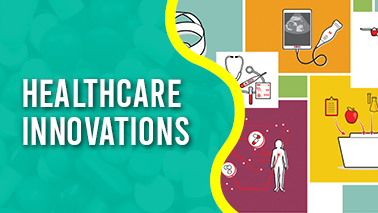
Tags
Biotechnology Conferences
Digital Health Conferences
Internal Medicine Conferences
Preventive Medicine Conferences
Primarycare Conferences 2024
Virology Conferences
Primary Care Conferences
Pharmaceutical Conferences
Family Medicine Conferences
Clinical Medicine Conferences
Genomics Conferences
Health Economics Conferences 2024
Cardiology Conferences
HIV/ AIDS Conferences
Chronic Disease Conferences

Tags
Pediatrics Conferences
Family Medicine Conferences
Occupational Health and Safety Conferences
Preventive Medicine Conferences
Personalized and Precision Medicine
Primary Care Conferences
Primarycare Conferences 2024
Internal Medicine Conferences
Chronic Disease Conferences
Virology Conferences
Health Economics Conferences 2024
Digital Health Conferences
Dentistry Conferences
Nursing Conference 2024
Biotechnology Conferences

Tags
Clinical Medicine Conferences
Primary Care Conferences
Pharma Drugs and Research Conferences
Pharmaceutical Conferences
Internal Medicine Conferences
Healthcare Conferences 2024
Geriatrics Conferences
Family Medicine Conferences
Nano Medicine Conferences
HIV/ AIDS Conferences
Pediatrics Conferences
Public Health Conferences
Nutrition and Heath Conferences
Virology Conferences
Genomics Conferences
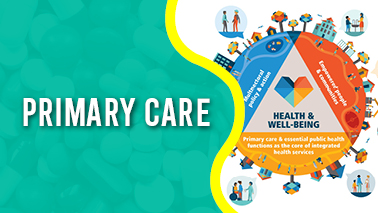
Tags
Pharma Drugs and Research Conferences
Public Health Conferences 2024
Pharmaceutical Conferences
Virology Conferences
Occupational Health and Safety Conferences
HIV/ AIDS Conferences
Preventive Medicine Conferences
Nursing Conference 2024
Geriatrics Conferences
Chronic Disease Conferences
Healthcare Conferences
Public Health Conferences
Diabetes Research Conferences
Genomics Conferences
Healthcare Conferences 2024
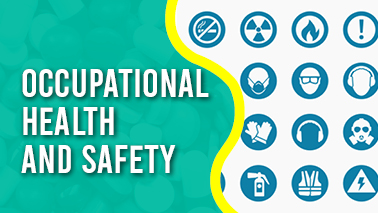
Tags
Primarycare Conferences 2024
Pediatrics Conferences
Endocrinology Conferences
Public Health Conferences 2024
Preventive Medicine Conferences
Nursing Conferences
Nano Medicine Conferences
Digital Health Conferences
Epidemiology Conferences 2024
Chronic Disease Conferences
Occupational Health Conferences 2024
Genomics Conferences
Biotechnology Conferences
Health Economics Conferences 2024
Pharmaceutical Conferences

Tags
Genomics Conferences
Pathology Conferences
Preventive Medicine Conferences 2024
Pharmaceutical Conferences
Cardiology Conferences
Primary Care Conferences
Pediatrics Conferences
Family Medicine Conferences
Infectious Diseases Conferences
Pharma Drugs and Research Conferences
Nursing Conference 2024
Oncology Conferences
Primarycare Conferences 2024
Public Health Conferences
Chronic Disease Conferences

Tags
Public Health Conferences 2024
Diabetes Research Conferences
Pathology Conferences
Chronic Disease Conferences
Personalized and Precision Medicine
Pediatrics Conferences
Pharma Drugs and Research Conferences
Internal Medicine Conferences
Primarycare Conferences 2024
Psychology and Psychiatrist Conferences
Public Health Conferences
Cardiology Conferences
Virology Conferences
Dentistry Conferences
Health Economics Conferences 2024

Tags
Infectious Diseases Conferences
Occupational Health and Safety Conferences
Diabetes Research Conferences
Preventive Medicine Conferences 2024
Epidemiology Conferences 2024
Psychology and Psychiatrist Conferences
Internal Medicine Conferences
Family Medicine Conferences
Primarycare Conferences 2024
Nano Medicine Conferences
Nursing Conference 2024
Pharma Drugs and Research Conferences
Virology Conferences
Geriatrics Conferences
Oncology Conferences

Tags
Internal Medicine Conferences
Biotechnology Conferences
Chronic Disease Conferences
Pharma Drugs and Research Conferences
Oncology Conferences
Healthcare Conferences 2024
Psychology and Psychiatrist Conferences
Cardiology Conferences
Virology Conferences
Diabetes Research Conferences
Personalized and Precision Medicine
Pharmaceutical Conferences
Nano Medicine Conferences
Pathology Conferences
Geriatrics Conferences

Tags
Infectious Diseases Conferences
Chronic Disease Conferences
Nutrition and Heath Conferences
Epidemiology Conferences 2024
Primary Care Conferences
Internal Medicine Conferences
Preventive Medicine Conferences 2024
Digital Health Conferences
Pharmaceutical Conferences
Pathology Conferences
Nursing Conferences 2024
Genomics Conferences
Psychology and Psychiatrist Conferences
Clinical Medicine Conferences
Occupational Health and Safety Conferences

Tags
Health Economics Conferences 2024
Genomics Conferences
Virology Conferences
Internal Medicine Conferences
Diabetes Research Conferences
Public Health Conferences
Pharmaceutical Conferences
Healthcare Conferences
Primarycare Conferences 2024
Geriatrics Conferences
Pediatrics Conferences
Endocrinology Conferences
Infectious Diseases Conferences
Nursing Conference 2024
Nano Medicine Conferences

Tags
Nursing Conferences
Nutrition and Heath Conferences
Preventive Medicine Conferences
Pharma Drugs and Research Conferences
Occupational Health and Safety Conferences
Healthcare Conferences
Preventive Medicine Conferences 2024
Biotechnology Conferences
Public Health Conferences 2024
Primary Care Conferences
Clinical Medicine Conferences
Diabetes Research Conferences
Nano Medicine Conferences
Occupational Health Conferences 2024
Public Health Conferences

Tags
Pharmaceutical Conferences
Genomics Conferences
Primarycare Conferences 2024
Occupational Health and Safety Conferences
Occupational Health Conferences 2024
Oncology Conferences
Epidemiology Conferences 2024
HIV/ AIDS Conferences
Primary Care Conferences
Dentistry Conferences
Public Health Conferences 2024
Diabetes Research Conferences
Geriatrics Conferences
Preventive Medicine Conferences
Biotechnology Conferences

Tags
Nursing Conferences
Biotechnology Conferences
Dentistry Conferences
Pharmaceutical Conferences
Epidemiology Conferences 2024
Virology Conferences
Pathology Conferences
Occupational Health and Safety Conferences
Genomics Conferences
Healthcare Conferences 2024
Cardiology Conferences
Nano Medicine Conferences
Geriatrics Conferences
Clinical Medicine Conferences
Endocrinology Conferences

Tags
Public Health Conferences 2024
Endocrinology Conferences
Chronic Disease Conferences
Nursing Conferences
Clinical Medicine Conferences
Diabetes Research Conferences
Public Health Conferences
Occupational Health Conferences 2024
Primary Care Conferences
Healthcare Conferences 2024
Family Medicine Conferences
Nutrition and Heath Conferences
Primarycare Conferences 2024
Digital Health Conferences
Genomics Conferences

Tags
Clinical Medicine Conferences
Preventive Medicine Conferences 2024
Pharma Drugs and Research Conferences
Public Health Conferences
Personalized and Precision Medicine
Infectious Diseases Conferences
Cardiology Conferences
Nursing Conference 2024
Healthcare Conferences 2024
Endocrinology Conferences
Genomics Conferences
Digital Health Conferences
Pathology Conferences
Primarycare Conferences 2024
Public Health Conferences 2024

Tags
Cardiology Conferences
Primarycare Conferences 2024
Family Medicine Conferences
Occupational Health and Safety Conferences
Occupational Health Conferences 2024
Biotechnology Conferences
Oncology Conferences
Geriatrics Conferences
Nursing Conferences 2024
Internal Medicine Conferences
Pharma Drugs and Research Conferences
Pathology Conferences
Nutrition and Heath Conferences
Public Health Conferences 2024
Primary Care Conferences

Tags
Endocrinology Conferences
Oncology Conferences
HIV/ AIDS Conferences
Nursing Conferences 2024
Nutrition and Heath Conferences
Healthcare Conferences
Dentistry Conferences
Health Economics Conferences 2024
Psychology and Psychiatrist Conferences
Digital Health Conferences
Nano Medicine Conferences
Occupational Health and Safety Conferences
Primary Care Conferences
Pharma Drugs and Research Conferences
Personalized and Precision Medicine

Tags
Personalized and Precision Medicine
Dentistry Conferences
Pharmaceutical Conferences
Psychology and Psychiatrist Conferences
Primarycare Conferences 2024
Genomics Conferences
Healthcare Conferences 2024
Preventive Medicine Conferences
HIV/ AIDS Conferences
Biotechnology Conferences
Nursing Conference 2024
Family Medicine Conferences
Infectious Diseases Conferences
Endocrinology Conferences
Health Economics Conferences 2024

Tags
Healthcare Conferences 2024
Preventive Medicine Conferences
Personalized and Precision Medicine
Nano Medicine Conferences
Psychology and Psychiatrist Conferences
Public Health Conferences
Oncology Conferences
Cardiology Conferences
Occupational Health and Safety Conferences
Nursing Conferences
Primary Care Conferences
Preventive Medicine Conferences 2024
Primarycare Conferences 2024
Nursing Conferences 2024
Dentistry Conferences

Tags
Pathology Conferences
Geriatrics Conferences
HIV/ AIDS Conferences
Cardiology Conferences
Chronic Disease Conferences
Nursing Conference 2024
Family Medicine Conferences
Healthcare Conferences 2024
Public Health Conferences 2024
Psychology and Psychiatrist Conferences
Epidemiology Conferences 2024
Pharmaceutical Conferences
Internal Medicine Conferences
Personalized and Precision Medicine
Nursing Conferences

Tags
Chronic Disease Conferences
Public Health Conferences
Occupational Health Conferences 2024
Nutrition and Heath Conferences
Genomics Conferences
Health Economics Conferences 2024
Epidemiology Conferences 2024
Personalized and Precision Medicine
Occupational Health and Safety Conferences
Biotechnology Conferences
Preventive Medicine Conferences
Diabetes Research Conferences
Nursing Conference 2024
Primarycare Conferences 2024
Digital Health Conferences

Tags
Nursing Conference 2024
Virology Conferences
Infectious Diseases Conferences
Dentistry Conferences
Nursing Conferences
Health Economics Conferences 2024
Pediatrics Conferences
Chronic Disease Conferences
Public Health Conferences
Epidemiology Conferences 2024
Public Health Conferences 2024
Healthcare Conferences
Preventive Medicine Conferences 2024
Nutrition and Heath Conferences
Diabetes Research Conferences

Tags
Nursing Conference 2024
Healthcare Conferences 2024
Public Health Conferences 2024
Occupational Health Conferences 2024
Geriatrics Conferences
Clinical Medicine Conferences
Cardiology Conferences
Digital Health Conferences
Public Health Conferences
Chronic Disease Conferences
Psychology and Psychiatrist Conferences
Endocrinology Conferences
HIV/ AIDS Conferences
Oncology Conferences
Healthcare Conferences
Tags
Healthcare Conferences 2024
Preventive Medicine Conferences 2024
Pediatrics Conferences
Dentistry Conferences
Oncology Conferences
HIV/ AIDS Conferences
Family Medicine Conferences
Nursing Conference 2024
Nursing Conferences
Healthcare Conferences
Diabetes Research Conferences
Endocrinology Conferences
Infectious Diseases Conferences
Public Health Conferences
Primary Care Conferences
Tags
Healthcare Conferences
Geriatrics Conferences
HIV/ AIDS Conferences
Dentistry Conferences
Primary Care Conferences
Primarycare Conferences 2024
Cardiology Conferences
Healthcare Conferences 2024
Chronic Disease Conferences
Clinical Medicine Conferences
Nutrition and Heath Conferences
Preventive Medicine Conferences
Nursing Conference 2024
Virology Conferences
Health Economics Conferences 2024

Tags
Oncology Conferences
Public Health Conferences
Geriatrics Conferences
Pediatrics Conferences
Dentistry Conferences
Chronic Disease Conferences
Pathology Conferences
Health Economics Conferences 2024
Genomics Conferences
Nursing Conferences 2024
HIV/ AIDS Conferences
Psychology and Psychiatrist Conferences
Personalized and Precision Medicine
Nursing Conference 2024
Cardiology Conferences

Tags
HIV/ AIDS Conferences
Nutrition and Heath Conferences
Nano Medicine Conferences
Endocrinology Conferences
Preventive Medicine Conferences
Virology Conferences
Dentistry Conferences
Digital Health Conferences
Family Medicine Conferences
Occupational Health Conferences 2024
Diabetes Research Conferences
Epidemiology Conferences 2024
Cardiology Conferences
Psychology and Psychiatrist Conferences
Preventive Medicine Conferences 2024

Tags
Healthcare Conferences
Oncology Conferences
Nursing Conferences
Personalized and Precision Medicine
Pharmaceutical Conferences
Healthcare Conferences 2024
Preventive Medicine Conferences
Family Medicine Conferences
Virology Conferences
Digital Health Conferences
Endocrinology Conferences
Occupational Health and Safety Conferences
Internal Medicine Conferences
Health Economics Conferences 2024
Pharma Drugs and Research Conferences

Tags
Healthcare Conferences
Nutrition and Heath Conferences
Family Medicine Conferences
Nursing Conferences
Diabetes Research Conferences
Internal Medicine Conferences
Health Economics Conferences 2024
Chronic Disease Conferences
Occupational Health and Safety Conferences
Healthcare Conferences 2024
Preventive Medicine Conferences
Occupational Health Conferences 2024
Primary Care Conferences
Preventive Medicine Conferences 2024
Public Health Conferences

Tags
Preventive Medicine Conferences 2024
Healthcare Conferences
Family Medicine Conferences
Psychology and Psychiatrist Conferences
Genomics Conferences
Infectious Diseases Conferences
Primarycare Conferences 2024
Nursing Conferences
Pathology Conferences
Diabetes Research Conferences
Nutrition and Heath Conferences
Dentistry Conferences
Preventive Medicine Conferences
HIV/ AIDS Conferences
Occupational Health Conferences 2024

Tags
Internal Medicine Conferences
Primary Care Conferences
Biotechnology Conferences
Preventive Medicine Conferences
Endocrinology Conferences
Clinical Medicine Conferences
Infectious Diseases Conferences
Pediatrics Conferences
Diabetes Research Conferences
Oncology Conferences
Nursing Conferences
Preventive Medicine Conferences 2024
Occupational Health and Safety Conferences
Primarycare Conferences 2024
Nursing Conferences 2024

Tags
Geriatrics Conferences
Chronic Disease Conferences
Epidemiology Conferences 2024
Pharmaceutical Conferences
Clinical Medicine Conferences
Healthcare Conferences
Healthcare Conferences 2024
Public Health Conferences
Endocrinology Conferences
Pediatrics Conferences
Occupational Health and Safety Conferences
Genomics Conferences
Primarycare Conferences 2024
Public Health Conferences 2024
Nano Medicine Conferences

Tags
Healthcare Conferences
Endocrinology Conferences
Personalized and Precision Medicine
Biotechnology Conferences
Nano Medicine Conferences
Health Economics Conferences 2024
Family Medicine Conferences
HIV/ AIDS Conferences
Pharmaceutical Conferences
Public Health Conferences
Pharma Drugs and Research Conferences
Preventive Medicine Conferences 2024
Occupational Health Conferences 2024
Pediatrics Conferences
Primary Care Conferences

Tags
Nutrition and Heath Conferences
Internal Medicine Conferences
HIV/ AIDS Conferences
Preventive Medicine Conferences
Pharma Drugs and Research Conferences
Public Health Conferences
Public Health Conferences 2024
Diabetes Research Conferences
Genomics Conferences
Cardiology Conferences
Primary Care Conferences
Personalized and Precision Medicine
Healthcare Conferences
Infectious Diseases Conferences
Primarycare Conferences 2024
Tags
Cardiology Conferences
Genomics Conferences
Endocrinology Conferences
Psychology and Psychiatrist Conferences
Nursing Conferences
Occupational Health and Safety Conferences
Pediatrics Conferences
Infectious Diseases Conferences
Virology Conferences
Preventive Medicine Conferences
Clinical Medicine Conferences
Public Health Conferences
Healthcare Conferences 2024
Preventive Medicine Conferences 2024
Occupational Health Conferences 2024

Tags
Endocrinology Conferences
Pharma Drugs and Research Conferences
Occupational Health Conferences 2024
Pharmaceutical Conferences
Psychology and Psychiatrist Conferences
HIV/ AIDS Conferences
Healthcare Conferences 2024
Geriatrics Conferences
Infectious Diseases Conferences
Preventive Medicine Conferences 2024
Nursing Conference 2024
Diabetes Research Conferences
Personalized and Precision Medicine
Public Health Conferences
Health Economics Conferences 2024
Tags
Infectious Diseases Conferences
Pediatrics Conferences
Oncology Conferences
Internal Medicine Conferences
Clinical Medicine Conferences
Chronic Disease Conferences
Primarycare Conferences 2024
Nutrition and Heath Conferences
Public Health Conferences
Public Health Conferences 2024
Biotechnology Conferences
Pharma Drugs and Research Conferences
Family Medicine Conferences
Genomics Conferences
Health Economics Conferences 2024
Tags
Preventive Medicine Conferences
Nano Medicine Conferences
Psychology and Psychiatrist Conferences
Pediatrics Conferences
Nutrition and Heath Conferences
Dentistry Conferences
Genomics Conferences
Public Health Conferences 2024
Pharma Drugs and Research Conferences
Endocrinology Conferences
Occupational Health Conferences 2024
Clinical Medicine Conferences
Diabetes Research Conferences
Epidemiology Conferences 2024
Oncology Conferences
Tags
Primary Care Conferences
Pathology Conferences
Nursing Conferences 2024
Internal Medicine Conferences
Healthcare Conferences 2024
Cardiology Conferences
Infectious Diseases Conferences
Family Medicine Conferences
Primarycare Conferences 2024
Biotechnology Conferences
Pediatrics Conferences
Preventive Medicine Conferences
Digital Health Conferences
Nutrition and Heath Conferences
Dentistry Conferences
Tags
Public Health Conferences 2024
Public Health Conferences
Clinical Medicine Conferences
Family Medicine Conferences
Pathology Conferences
Cardiology Conferences
Nursing Conferences 2024
Nursing Conferences
Infectious Diseases Conferences
Pharma Drugs and Research Conferences
Internal Medicine Conferences
Primary Care Conferences
Primarycare Conferences 2024
Personalized and Precision Medicine
HIV/ AIDS Conferences
Tags
Digital Health Conferences
Epidemiology Conferences 2024
Chronic Disease Conferences
Pharmaceutical Conferences
Genomics Conferences
HIV/ AIDS Conferences
Virology Conferences
Healthcare Conferences 2024
Preventive Medicine Conferences
Diabetes Research Conferences
Personalized and Precision Medicine
Nursing Conferences
Cardiology Conferences
Pediatrics Conferences
Endocrinology Conferences
Tags
Nursing Conferences 2024
Clinical Medicine Conferences
Nano Medicine Conferences
Pediatrics Conferences
Nursing Conference 2024
Nutrition and Heath Conferences
Chronic Disease Conferences
Preventive Medicine Conferences
Digital Health Conferences
Public Health Conferences 2024
Dentistry Conferences
Cardiology Conferences
Primarycare Conferences 2024
Primary Care Conferences
Pathology Conferences
Tags
Nano Medicine Conferences
Psychology and Psychiatrist Conferences
Preventive Medicine Conferences
Preventive Medicine Conferences 2024
Public Health Conferences 2024
Biotechnology Conferences
Pharmaceutical Conferences
Virology Conferences
Healthcare Conferences 2024
HIV/ AIDS Conferences
Family Medicine Conferences
Nutrition and Heath Conferences
Chronic Disease Conferences
Public Health Conferences
Pharma Drugs and Research Conferences

Tags
Preventive Medicine Conferences
Health Economics Conferences 2024
Chronic Disease Conferences
Occupational Health Conferences 2024
Family Medicine Conferences
Preventive Medicine Conferences 2024
Public Health Conferences 2024
Psychology and Psychiatrist Conferences
Diabetes Research Conferences
Nursing Conference 2024
HIV/ AIDS Conferences
Biotechnology Conferences
Pediatrics Conferences
Endocrinology Conferences
Pathology Conferences

Tags
Public Health Conferences 2024
Nano Medicine Conferences
Nursing Conferences 2024
Genomics Conferences
Family Medicine Conferences
Pathology Conferences
Healthcare Conferences 2024
Biotechnology Conferences
Endocrinology Conferences
Nursing Conference 2024
Personalized and Precision Medicine
HIV/ AIDS Conferences
Clinical Medicine Conferences
Oncology Conferences
Chronic Disease Conferences
Tags
Nursing Conferences 2024
Preventive Medicine Conferences
Healthcare Conferences 2024
Epidemiology Conferences 2024
Biotechnology Conferences
Occupational Health and Safety Conferences
Nano Medicine Conferences
Health Economics Conferences 2024
Pharma Drugs and Research Conferences
Cardiology Conferences
Nutrition and Heath Conferences
HIV/ AIDS Conferences
Internal Medicine Conferences
Primary Care Conferences
Endocrinology Conferences

Tags
Preventive Medicine Conferences
Epidemiology Conferences 2024
Occupational Health and Safety Conferences
Biotechnology Conferences
Preventive Medicine Conferences 2024
Digital Health Conferences
Pediatrics Conferences
Nano Medicine Conferences
Diabetes Research Conferences
Virology Conferences
Cardiology Conferences
Occupational Health Conferences 2024
Primarycare Conferences 2024
Pharma Drugs and Research Conferences
Pathology Conferences

Tags
Dentistry Conferences
Nursing Conferences
Public Health Conferences 2024
Digital Health Conferences
Biotechnology Conferences
Psychology and Psychiatrist Conferences
Primarycare Conferences 2024
Healthcare Conferences
Pharma Drugs and Research Conferences
Nursing Conferences 2024
Pediatrics Conferences
Genomics Conferences
Primary Care Conferences
Personalized and Precision Medicine
Pathology Conferences

Tags
Public Health Conferences 2024
Nursing Conferences 2024
Preventive Medicine Conferences 2024
Primary Care Conferences
Family Medicine Conferences
Pharma Drugs and Research Conferences
Geriatrics Conferences
Psychology and Psychiatrist Conferences
Pediatrics Conferences
Chronic Disease Conferences
Healthcare Conferences 2024
Primarycare Conferences 2024
Diabetes Research Conferences
Genomics Conferences
Nursing Conferences

Tags
Family Medicine Conferences
Chronic Disease Conferences
Nutrition and Heath Conferences
Healthcare Conferences 2024
Virology Conferences
Oncology Conferences
Pharmaceutical Conferences
Health Economics Conferences 2024
Genomics Conferences
Psychology and Psychiatrist Conferences
Nursing Conferences 2024
Internal Medicine Conferences
Pathology Conferences
Public Health Conferences
Endocrinology Conferences

Tags
Healthcare Conferences 2024
Family Medicine Conferences
Occupational Health Conferences 2024
Psychology and Psychiatrist Conferences
Pharma Drugs and Research Conferences
Diabetes Research Conferences
Nursing Conferences
Public Health Conferences
Cardiology Conferences
Internal Medicine Conferences
Nursing Conferences 2024
Occupational Health and Safety Conferences
Oncology Conferences
Primary Care Conferences
Endocrinology Conferences

Tags
Chronic Disease Conferences
Digital Health Conferences
Preventive Medicine Conferences
Pediatrics Conferences
Internal Medicine Conferences
Public Health Conferences 2024
Health Economics Conferences 2024
HIV/ AIDS Conferences
Pharma Drugs and Research Conferences
Nano Medicine Conferences
Personalized and Precision Medicine
Diabetes Research Conferences
Virology Conferences
Occupational Health and Safety Conferences
Genomics Conferences

Tags
Healthcare Conferences 2024
Internal Medicine Conferences
Primarycare Conferences 2024
Public Health Conferences 2024
Preventive Medicine Conferences
Pathology Conferences
Digital Health Conferences
Chronic Disease Conferences
Family Medicine Conferences
Pediatrics Conferences
Psychology and Psychiatrist Conferences
Nursing Conferences 2024
Epidemiology Conferences 2024
Preventive Medicine Conferences 2024
Nursing Conferences

Tags
Digital Health Conferences
Personalized and Precision Medicine
Diabetes Research Conferences
Primarycare Conferences 2024
Nursing Conference 2024
Psychology and Psychiatrist Conferences
Healthcare Conferences 2024
Oncology Conferences
Internal Medicine Conferences
Nutrition and Heath Conferences
Occupational Health Conferences 2024
Pharmaceutical Conferences
Dentistry Conferences
Pediatrics Conferences
Virology Conferences

Tags
Infectious Diseases Conferences
HIV/ AIDS Conferences
Diabetes Research Conferences
Endocrinology Conferences
Public Health Conferences 2024
Primary Care Conferences
Dentistry Conferences
Digital Health Conferences
Healthcare Conferences
Genomics Conferences
Pharma Drugs and Research Conferences
Nursing Conferences 2024
Epidemiology Conferences 2024
Preventive Medicine Conferences
Pathology Conferences
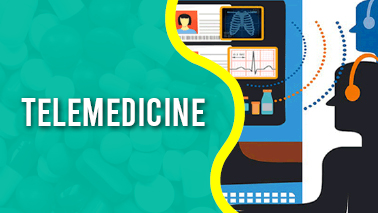
Tags
Public Health Conferences
Primarycare Conferences 2024
Psychology and Psychiatrist Conferences
Internal Medicine Conferences
Pharmaceutical Conferences
HIV/ AIDS Conferences
Geriatrics Conferences
Chronic Disease Conferences
Preventive Medicine Conferences
Nursing Conference 2024
Cardiology Conferences
Pediatrics Conferences
Biotechnology Conferences
Health Economics Conferences 2024
Endocrinology Conferences

Tags
Public Health Conferences
Pediatrics Conferences
Cardiology Conferences
Healthcare Conferences
Primarycare Conferences 2024
Health Economics Conferences 2024
Nano Medicine Conferences
Preventive Medicine Conferences 2024
Healthcare Conferences 2024
Nursing Conferences 2024
Dentistry Conferences
Personalized and Precision Medicine
Chronic Disease Conferences
Pharmaceutical Conferences
Family Medicine Conferences
Vision
We work hard to improve the lives of our patients and their families by collaborating with the healthcare community. We offer clinical experience to both allied health professionals and patients.
We focus on the right to comprehensive, high-quality primary care for individuals and populations.
• To provide the most safest, ethical, and effective medical care possible.
• Practice the safest, most ethical and effective medical care possible.
• Breakthrough research can lead to the discovery of new treatments and therapies.
• Promoting healthy and reducing health disparities.
• Educate and inspire faculty, healthcare developers, policy makers and leaders of the next generation.
• Build a philanthropic culture for patient care and research.
Mission
Our objective is to disseminate healthcare information and innovations that will guide in a new era of medicine.
Healthcare Market Forecast
Healthcare is one of those industries that has never seen ups and downs, particularly since technology has taken over its progress.
Even throughout the pandemic, technology was important in advancing healthcare to a higher level.
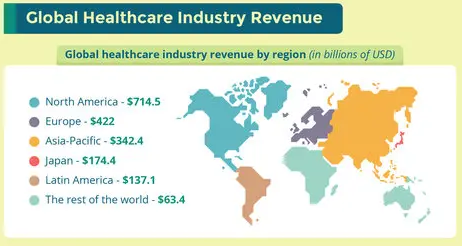
In 2019, the global home healthcare market was valued at USD 281.8 billion, with a compound annual growth rate (CAGR) of 7.9% predicted from 2020 to 2027. Market growth is expected to be increased by global population ageing and rising patient preference for value-based healthcare. In 2019, the World Health Organization (WHO) estimated that 703 million people aged 65 and up lived in the world. By 2050, the number of elderly people is expected to increase to 1.5 billion. The ageing population necessitates more patient-centric healthcare services, which in turn raises demand for healthcare personnel and agencies, drive market growth.
Medicare is the largest single payer of home healthcare services in the United States. Medicare accounts for more than 40% of all home health care expenses.
Healthcare Market Overview in USA
The home healthcare market is divided into two components: equipment and services, wherein the services segment dominated the market with a share of 80% in 2019. The demand for home healthcare agencies is increasing as the world's population ages, resulting in better patient outcomes. Furthermore, the rising frequency of chronic diseases among the elderly is a prominent factor contributing to market growth.
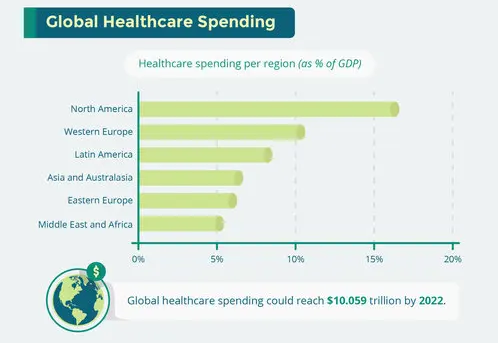
In 2019, therapeutic devices dominated the equipment market. The growing number of patients with chronic or severe respiratory infections, urinary infections, or end-stage renal disease (ESRD) necessitates the use of innovative devices for treatment. Another important element driving the therapeutic equipment market is lower service rates for in-home healthcare when compared to hospitals or nursing homes. End-stage renal diseases (ESRD) affects roughly 750,000 persons in the United States each year, and 2 million patients worldwide, according to the University of California, San Francisco
The diagnostics equipment market is expected to develop at a healthy rate over the projected period, owing to the rising prevalence of diabetes and cardiovascular illnesses, both of which necessitate constant monitoring. Furthermore, increasing patient awareness of the screening process and technological advancements, such as the integration of microfluidics, sensors, the Internet of Things (IoT), smartphones, and wearables, provide point-of-care testing to patients and represent a significant opportunity for providing sensitive, low-cost, rapid, and connected diagnostics.
In 2019, North America dominated the home healthcare industry with a 42% share. In 2019, the United States had the greatest market share in North America, due to changing trends towards in-home healthcare from nursing homes, technology advancements, and the presence of modern medical infrastructure. In addition, the region's market is being driven by high patient awareness levels, rising healthcare expenses, and the deployment of a streamlined regulatory framework. Profits in the U.S. healthcare industry are expected to grow at a 5% annual rate through 2024, with medtech and healthcare IT experiencing the fastest growth. Profits in healthcare information technology are expected to rise from 14 billion US dollars in 2019 to 28 billion US dollars in 2024.
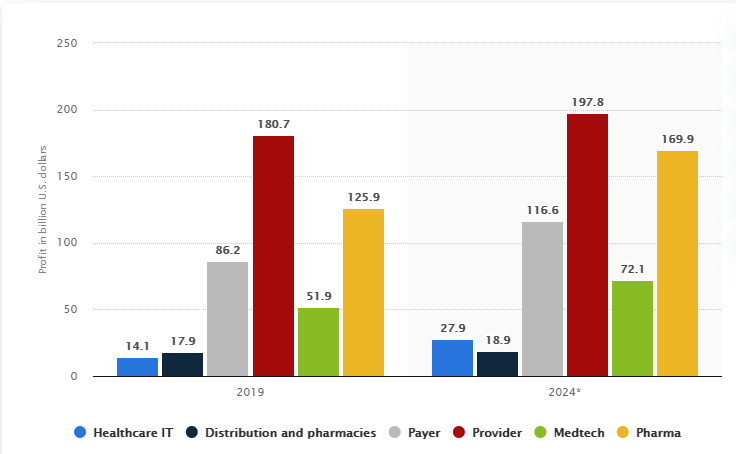
Healthcare Market Overview in Japan
Japan is the world's second-largest market for medical devices and healthcare. Japan is open to innovative and high-quality products and technologies, with nearly 45% of medical devices imported.
By nearly 180,000 medical facilities, including hospitals and clinics, Japan has the world's second largest healthcare market. In fiscal FY 2010, national medical expenditure was 37.4 trillion (approx £249 billion @150 = £1), a 3.9 percent increase over the previous year. This was a record-high in terms of both level and rate of growth, driven by the implementation of cutting-edge medical technologies as well as one of the world's fastest ageing populations. As a result of the ageing population, demand for assistive and care products has increased. However, the market is already crowded with a wide range of products, making it extremely difficult for new entrants lacking unique selling points.
The Japanese medical device market is also the world's second largest, valued at 2.4 trillion yen (approx. £16 billion) in 2011, with foreign manufacturers accounting for 44.4 percent of the products. Japan has long been known as a high-tech nation, but the market for medical devices is still heavily reliant on imports.
Healthcare Market Overview in Europe
Despite rising global trade tensions and a sluggish global economic outlook for 2020, the global healthcare market is expected to surpass $2 trillion in 2020. BREXIT is expected to have a significant impact on the United Kingdom, Europe's largest digital healthcare market.
In the forecast period of 2020 to 2027, the healthcare IT market is expected to grow. According to Data Bridge Market Research, the market will be worth USD 150.97 billion by 2027, growing at a CAGR of 15.62 percent during the forecast period.
The European healthcare market is expected to grow from approximately $2080 billion in 2016 to approximately $2125 billion in 2020. The European healthcare market is expected to exceed US$ 224 billion by 2022.
The European home healthcare market was worth USD 70.28 billion in 2019 and is expected to grow at an 8.37 percent CAGR to reach USD 105.04 billion by 2024.
In 2019, Germany had the highest market share in Europe, followed by France. This is mostly due to rising in-home healthcare spending in the country and rising demand for the skilled nursing workers to provide in-home care.
Healthcare Market Overview in Australia
The health care and social assistance industry is Australia's largest employer. This industry employed over 1.7 million people in 2020, with a projected increase to more than 1.9 million by 2024.
Occupations related to the HLT – Health Training Package account for roughly one-third of the workforce in Health Care and Social Assistance. The occupations with the highest proportion of the workforce are Aged and Disabled Carers and Nursing Support and Personal Care Workers. Both are expected to grow significantly until 2024, with Aged and Disabled Carers growing by more than 25%. Other occupations in this sector are expected to grow to varying degrees as well. Welfare Support Workers, for example, are expected to grow by nearly 23%, Health and Welfare Services Managers by about 19%, and Complementary Health Therapists by about 15%.
Medical device industry overview: The medical device sector in Australia is mature, with a well-developed regulatory system. However, in the next years, it will be one of the slowest-growing economies in the South Pacific area. In 2016, the market was worth $4 billion, down from $5 billion in 2014. Due to Australia's sinking currency, market recovery will be delayed in 2019. Despite its low growth, Australia's ageing population, Federal Budget measures, and openness to adopt new technology should help to stabilise the market.
Australian market opportunities: Australia's healthcare business is sophisticated and open to innovative products. A wide range of medical gadgets, particularly those designed to treat and manage age-related disorders, are in high demand. Because the Australian market is pushed to cut prices, imported devices are frequently inventive and cost-effective. In addition, there is a growing demand for gadgets that help people with disabilities and chronic pain, as well as those that help them recover faster. The Australian market is highly accessible from a regulatory aspect for items that already have CE Marking.
Healthcare Market Overview in Middle East
Healthcare prospects are expanding across the Middle East. According to a recent analysis by the US-UAE Business Council, healthcare spending in the UAE is forecast to rise from $17 billion in 2017 to $21.3 billion by 2021, with a CAGR of 8.5 percent predicted between 2018 and 2023 in the UAE Healthcare Sector Outlook 2023 report.
Aging populations, longer life expectancies, and sedentary lifestyles, all of which contribute to an increase in obesity, cancer, and diabetes, are driving demand growth. New modes of care and out-of-hospital services are emerging as a result of an emphasis on prevention and well-being rather than simply treating patients. Saudi Arabia, for example, is developing a new healthcare system that includes primary, community, and secondary care.
Simultaneously, labour challenges, such as a lack of competent clinical staff and a strong reliance on expatriates, are pushing demand for technology such as digital health, artificial intelligence, and robots to fill the gap. By 2025, the region's medical technology market is estimated to be worth $31.6 billion.
The size of the Middle East and Africa Home Healthcare Market was worth USD 21.62 billion in 2020 and estimated to be growing at a CAGR of 9.30%, to reach USD 33.32 billion by 2025 during the forecast period.
These countries are expected to have a market size of USD 102 billion in 2024 with a CAGR value of 9.2% during the forecast period. Healthcare is the fastest-growing sector in the UAE, accounting for 79% of the market.
Healthcare Market Overview in APAC
The size of the home Healthcare Market in the Asia Pacific was worth USD 43.25 billion in 2020 and estimated to be growing at a CAGR of 12.56% to each USD 78.14 billion by 2025.
|
Home Healthcare Market Report Scope |
|
|
Report Attribute |
Details |
|
Market size value in 2020 |
USD 303.6 billion in 2020 |
|
Revenue forecast in 2027 |
USD 515.6 billion |
|
Growth Rate |
CAGR of 7.9% from 2020 to 2027 |
Contact us now and we will make your event unique & unforgettable

Background: The excess mortality burden due to violent fatal injuries is an urgent public health issue for adolescents and young adults, especially those from racial and ethnic minority populations. We examined the research portfolio of the United States, National Institutes of Health (NIH) related to violent fatal injuries between 2009 and 2019 to focus on adolescents and young adults from NIH-designated populations experiencing health disparities and to identify trends and research gaps. Methods: We extracted the following descriptive variables from the grant’s abstracts and the grant’s description from RePORTER: (1) year of funding award; (2) location of the research, such as city and state; (3) population focus classified as racial and ethnic minorities; less privileged socioeconomic status populations; underserved rural populations and sexual and gender minorities, as grants could identify more than one population focus; (4) type of research conducted, defined as: • Etiology grants: examining determinants and their interactions, as well as contributing pathways; • Intervention grants: developing interventions to prevent or reduce violent fatal injury; • Dissemination and implementation grants: translating evidence-based interventions to prevent or reduce violent fatal injury to real-world settings; and • Surveillance grants: creating or enhancing data systems to monitor the incidence, prevalence, and mortality of violent fatal injury.For the grants that met the inclusion criteria, the authors reviewed the grant’s information downloaded from RePORTER. This information included the abstract and administrative data of the award. To identify the determinants studied in each grant, authors reviewed the abstracts and specific aims. Only where determinants had been studied explicitly, we coded grants using the Framework of the National Institute of Minority Health and Disparities (NIMHD). Key words from the abstracts were analyzed to identify fields studies and presented in a word cloud. Results: In 10 years, NIH funded 17 grants that produced 90 publications. Researchers used socioecological frameworks most to study violent crime, except in rural locations. Research gaps include the direct impact of violent crime among those victimized and health care (the least studied determinant) and premature mortality disparities caused by hate crimes.

Purpose: Previous studies show increased sensitivity of older (28-29 months) compared with young adult mice (3 months, possessing a mature immune system) to radiation-induced GI lethality. The objective of this study is to determine whether the cycling crypt base columnar 1 cells (CBCs) in aging animals are specifically more sensitive to radiation effects than the CBCs in young adult mice, and to identify factors that contribute to the increased radiosensitivity. Results: Mortality induced by sub-total body radiation was assessed at different doses (13Gy, 14Gy, and 15Gy) in young adult mice versus older mice. Each dose was evaluated for the occurrence of lethal GI syndrome. A higher death rate due to radiation-induced GI syndrome was observed in older mice as compared with young adult mice: 30% vs. 0% at 13Gy, 90% vs. 40% at 14Gy, and 100% vs. 60% at 15Gy. Radiation-induced damage to crypts was determined by measuring crypt regeneration (H&E staining, Ki67 expression), CBC biomarkers (lgr5 and ascl2), premature senescence (SA-y?-gal activity) and apoptosis of CBCs. At all three doses, crypt microcolony survival assays showed that the older mice had fewer regenerating crypts at 3.5 days post-radiation treatment. Furthermore, in the older animals, baseline CBCs numbers per circumference were significantly decreased, correlating with an elevated apoptotic index. Analysis of tissue damage showed an increased number of senescent CBCs per crypt circumference in older mice relative to younger mice, where the latter was not significantly affected by radiation treatment. Conclusions: Enhanced sensitivity to radiation-induced GI syndrome and higher mortality in older mice can be attributed to a decreased capacity to regenerate crypts, presumably due to increased apoptosis and senescence of CBCs.

This presentation will highlight the application of an innovative stepped care framework (SC2.0) within a digital population based mental health service for all people across Canada. With 4 million unique site visitors, Wellness Together Canada (WTC) offers low barrier preventative care, early intervention, and ongoing mental health and substance use health support, available 24/7 across a continuum of care. The implementation of the SC2.0 © model is demonstrated to reduce wait times, improve access and individual choice, adherence to treatment, and satisfaction. With 7 different types of services and over 500 resources for individuals to choose from, the Wellness Together Canada portal is delivered in alignment with the SC2.0 guiding principles of open-access, person-centric and strengths based care. Through the WTC web based and mobile application, self-assessment and wellness tracking is provided to support individuals to monitor their mental health over time and make informed choice through the use of three validated questionnaires. In addition to mental health and substance use health information and courses, easily accessible counselling services, peer and crisis supports are available on demand with low to no wait times, no referral or identification required. Funded by the Government of Canada, the cost of delivering this population level service is less than $2 per person, with additional system cost savings. To continue to respond to emerging and ongoing needs, community engagement and co-design are robust and ongoing, focusing on the unique needs of communities across Canada, including Indigenous communities, Black Canadian communities, healthcare workers and veterans. Having emerged out of increased need during the COVID pandemic, Wellness Together Canada continues to provide population level , digital mental health service to the 38 million people living across Canada
















